Disclosure: This article contains affiliate links. We may earn a commission from purchases at no extra cost to you, which helps our travel content.
The first time I stepped out of Suvarnabhumi Airport into Bangkok's wall of heat and humidity, I felt like a deer caught in headlights. A sea of taxis, tuk-tuks, and motorbikes swarmed around me in what appeared to be complete chaos, yet somehow flowed with its own peculiar rhythm. Having spent 25 years navigating the relatively orderly streets of Edinburgh before moving to Salt Lake City, Bangkok's transportation system initially struck me as madness incarnate. But five visits later, I've not only made peace with this beautiful chaos – I've come to appreciate its brilliant efficiency. Like a well-orchestrated kitchen during the dinner rush, Bangkok's transport options may seem overwhelming at first glance but follow certain patterns that, once understood, will transform your experience from bewildering to liberating. So grab a metaphorical pint with me as I share how to navigate this vibrant city without breaking the bank or losing your sanity.
The Airport Arrival: Your First Test
After a 16-hour flight from London, the last thing you need is to be ripped off by an overpriced airport taxi. I learned this lesson the hard way on my first visit when I paid nearly triple the standard rate because I was too jet-lagged to think straight.
The most budget-friendly option from Suvarnabhumi Airport is the Airport Rail Link, connecting directly to the city's BTS Skytrain system. At just 45 baht (about £1) to the city center, it's a steal compared to the 400+ baht you might spend on a taxi. The train runs from 6 am to midnight and takes roughly 30 minutes to Phaya Thai station.
If you arrive at Don Mueang Airport (Bangkok's second airport used by many budget airlines), your options are more limited. The most economical choice is the A1 or A2 airport bus to Mo Chit BTS station, costing around 30 baht.
For late-night arrivals when the trains aren't running, prepare yourself with the Grab app before landing. It's Southeast Asia's equivalent to Uber and ensures you'll pay a fair, metered rate without haggling. I keep a portable charger in my daypack specifically for these situations – nothing worse than having your phone die just when you need to book transport.

💡 Pro Tips
- Download the Grab app before arriving in Thailand
- Always carry small Thai baht notes for public transport
- Take a photo of your hotel address in Thai script to show drivers
Mastering the BTS Skytrain & MRT: Bangkok's Lifelines
If Bangkok's streets are its arteries, then the elevated BTS Skytrain and underground MRT are its beating heart – pumping millions of people efficiently across the city while floating above the congested roads below.
The first time I rode the BTS, I was struck by how immaculately clean and organized it was compared to the apparent street-level chaos. It felt like stepping into another dimension – one with air conditioning, no less! A godsend when the temperature outside feels like my kitchen during a Saturday night rush.
The BTS consists of two lines: the Sukhumvit Line (light green) and the Silom Line (dark green). The MRT has two subway lines: the Blue Line and Purple Line. Together, they cover most major tourist areas and business districts.
Purchasing tickets is straightforward once you know the system. At any station, you'll find automated machines that accept coins and small banknotes (no 1000 baht notes, mind you!). Simply select your destination on the touchscreen map, and the fare will be displayed – typically between 16-59 baht depending on distance.
If you're staying longer than a few days, consider purchasing a Rabbit Card (for BTS) or MRT stored value card. They work like London's Oyster card, allowing you to top up and tap through without queuing for individual tickets. Plus, they offer slight discounts on fares.
During my second visit with my wife and daughter, we purchased Rabbit Cards and saved both time and money – plus they make for a unique souvenir that's actually useful if you return to Thailand.

💡 Pro Tips
- Travel during off-peak hours (avoid 7-9am and 5-7pm) to escape the crush
- Stand on the right, walk on the left on escalators (just like London)
- Store your Rabbit Card away from your phone to prevent interference
The Art of the Tuk-Tuk: Negotiation & Navigation
Ah, the tuk-tuk – Bangkok's iconic three-wheeled chariot. Equal parts thrilling and terrifying, these zippy vehicles are as much a part of the Thai experience as pad thai or temples. But beware, my friends – tuk-tuks are also the most common tourist trap in the city.
My first tuk-tuk experience was a classic blunder. Standing outside the Grand Palace, I agreed to a 'special tour' for 20 baht (suspiciously cheap) only to be shuttled to three different tailor shops and a gem store before reaching my actual destination. The driver earned commission at each stop, and I learned a valuable lesson about Bangkok's transport economics.
The golden rule of tuk-tuks: always negotiate and agree on the price before climbing aboard. As a rule of thumb, a fair price is about 50-100 baht for a short journey (1-2km). For longer trips, you're better off with alternatives.
That said, tuk-tuks offer an experience that's worth having at least once. The wind in your face (along with exhaust fumes, admittedly) and the ability to zip through traffic jams make them occasionally useful and always memorable. Just channel your inner Scottish haggler – I find my Edinburgh accent gets thicker when I'm negotiating prices.
One evening, after taking a cooking class near Khao San Road, I needed to get back to my hotel quickly. I approached a tuk-tuk driver, stated my destination and offered 80 baht – about half his initial asking price. He countered with 100, I agreed, and we were off on a wild ride through Bangkok's back alleys that no taxi could have navigated. Sometimes, the tuk-tuk truly is the perfect tool for the job.

💡 Pro Tips
- Never accept the first price - start at 50% of what they quote
- Avoid tuk-tuks parked directly outside major tourist attractions
- If a tuk-tuk driver offers an unusually low fare, they're planning to take you shopping
Chao Phraya Express: The Water Taxi Adventure
If the BTS is Bangkok's modern heartbeat, then the Chao Phraya River is its ancient soul. The river has been Bangkok's main thoroughfare for centuries, and today the water taxi system remains one of the most efficient (and scenic) ways to reach many of the city's historic attractions.
The Chao Phraya Express Boat service runs up and down the river, stopping at piers near major landmarks like the Grand Palace, Wat Arun, and Chinatown. Boats are color-coded based on their routes: orange boats stop at all local piers, blue boats are express services with fewer stops, and the tourist boats have a blue flag.
My recommendation? Skip the expensive tourist boats (150 baht for an all-day pass) and hop on the orange flag local boats instead. At just 15-20 baht per journey, they're a fraction of the price and give you a more authentic experience alongside Bangkok residents.
During my last visit, I spent an entire day using only water transportation to explore Bangkok. Armed with my waterproof phone case (essential for the occasional splash) and a river map, I hopped between temples, markets, and riverside restaurants with ease. The gentle breeze off the water provided welcome relief from the heat, and the constantly changing scenery of longboats, riverside temples, and modern hotels created better entertainment than any tour bus window.
The most magical moment came at sunset, when the golden light transformed the river into a shimmering pathway and silhouetted the temples against the darkening sky. From my 20-baht seat on the water taxi, I had a multi-million-dollar view that no luxury cruise could improve upon.
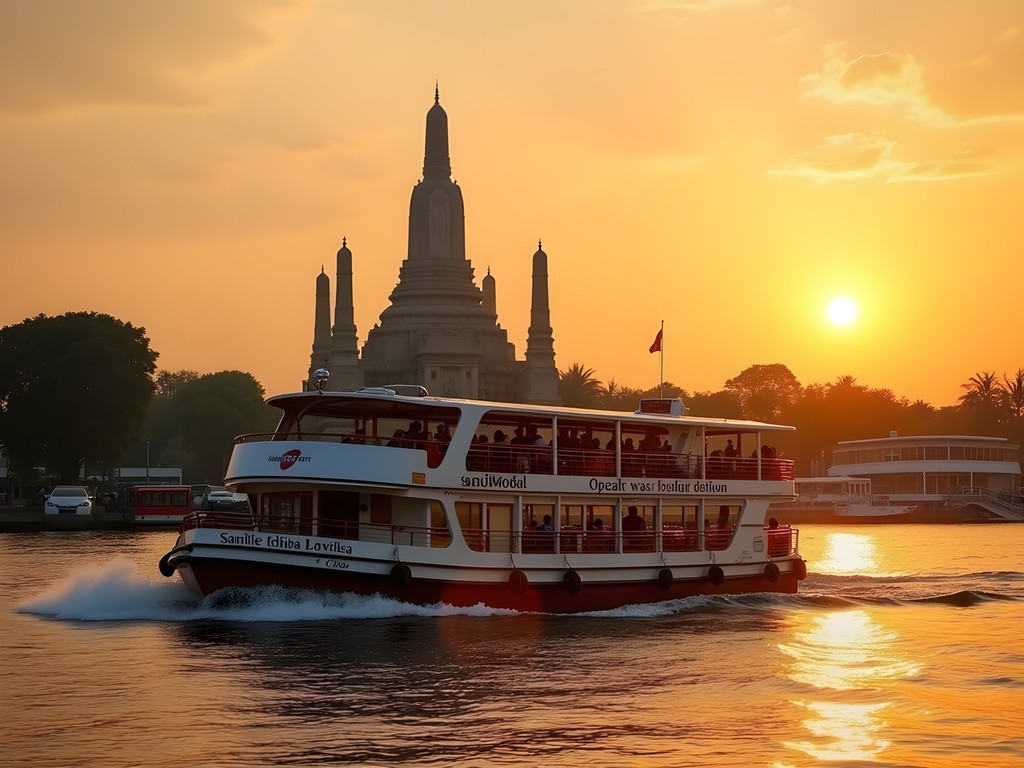
💡 Pro Tips
- Stand ready with your fare in hand - boats don't wait long at piers
- Watch for the orange flag boats for the cheapest regular service
- Sit in the middle of the boat for the smoothest ride and least splashing
Bangkok's Bus System: For the Brave & Budget-Conscious
If you're truly committed to traveling like a local and stretching your baht to the maximum, Bangkok's extensive bus system awaits the intrepid explorer. I'll be honest – this is not for first-time visitors or those on a tight schedule. The bus system is comprehensive but complicated, with hundreds of routes and varying types of vehicles from modern air-conditioned coaches to vintage fan-cooled workhorses that have likely been running since before I managed my first restaurant in Edinburgh.
Buses are categorized by numbers and colors, with fares ranging from an astonishingly cheap 8 baht (about 20p!) for regular non-air-conditioned buses to around 20-25 baht for air-conditioned ones. The catch? There's rarely any English signage, routes can be confusing, and buses are subject to the same traffic congestion as everything else on the road.
That said, I've had some of my most memorable Bangkok experiences on local buses. On my third visit, determined to find a specific street food vendor recommended by a chef I'd met, I boarded a crowded bus heading to a far-flung neighborhood. Despite my rudimentary Thai, an elderly woman noticed my confusion and not only helped me find the correct stop but insisted on walking me three blocks to my destination. The kindness of strangers and the authentic glimpse into everyday Bangkok life was worth the hour-long, sweaty journey.
If you're feeling adventurous, download the ViaBus app which offers English-language bus routes and real-time tracking. It's been a game-changer for navigating the bus system in recent years. Pair it with Google Maps (which now includes many Bangkok bus routes) and you'll have a fighting chance at mastering this most local form of transport.
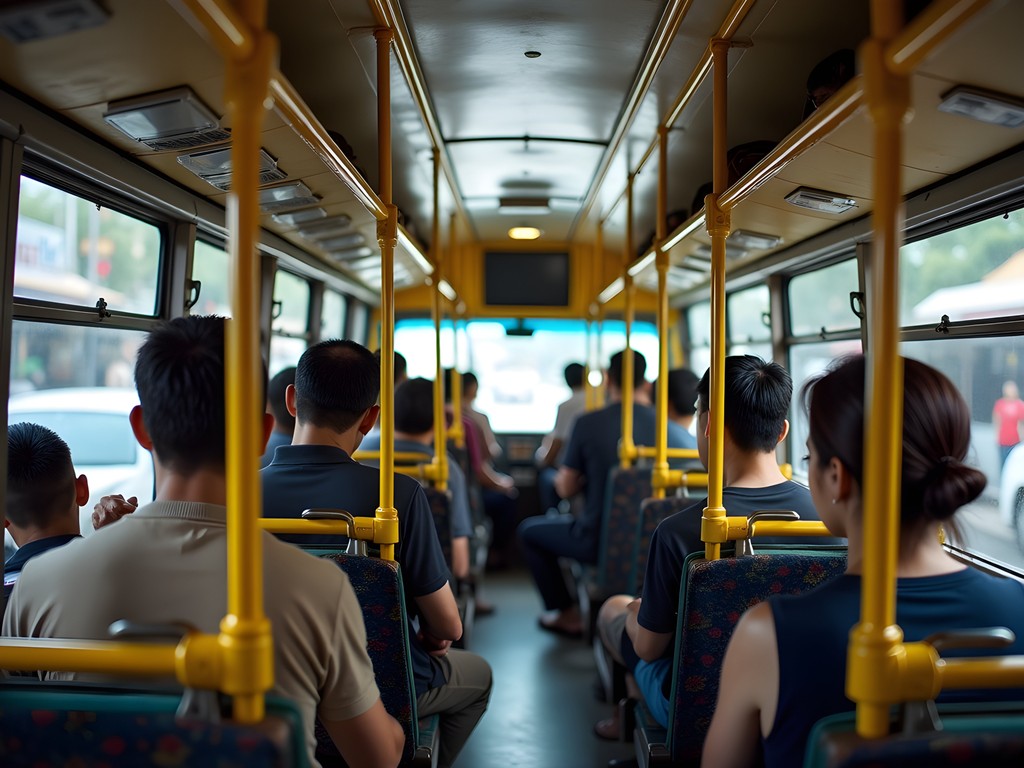
💡 Pro Tips
- Have small change ready - bus conductors can't break large bills
- Look for the blue air-conditioned buses if traveling during midday heat
- Learn the Thai phrases for 'stop here please' (จอดตรงนี้) and 'where is this bus going?' (รถบัสนี้ไปไหน)
Motorcycle Taxis: The Traffic-Beating Option
When Bangkok traffic grinds to a standstill, and even tuk-tuks are trapped in the gridlock, one transport option continues to weave through the chaos with impressive efficiency: motorcycle taxis. These orange-vested road warriors can be found at designated stands throughout the city, ready to zip you to your destination for a fraction of the time it would take other vehicles.
I approached my first motorcycle taxi with the trepidation of a man who values his remaining years. Having witnessed Bangkok's seemingly lawless traffic flow, entrusting my safety to a stranger on a motorbike seemed like madness. But when I was running late for a cooking class in Silom and the roads were completely jammed, I took the plunge.
The experience was simultaneously terrifying and exhilarating. My driver navigated spaces between cars that I wouldn't have thought possible, occasionally mounting pavements and traveling against traffic. We completed a journey that would have taken 30 minutes by taxi in just 7 minutes. I arrived at my cooking class with windswept hair, slightly shaky legs, and a new appreciation for Bangkok's traffic ecosystem.
Motorcycle taxis are identifiable by their bright orange vests with numbers on them. Prices are generally fixed based on distance and should be agreed upon before departure. For short distances, expect to pay 20-40 baht. They're particularly useful for traveling short distances from BTS stations or reaching areas not directly served by public transport.
While I can't claim it's the safest option, it's certainly the most efficient for solo travelers in a hurry. If you do take the plunge, I recommend wearing your daypack on your front rather than your back and using a travel scarf with hidden pocket to keep valuables secure during the ride. And perhaps say a wee prayer before you set off – I certainly did!
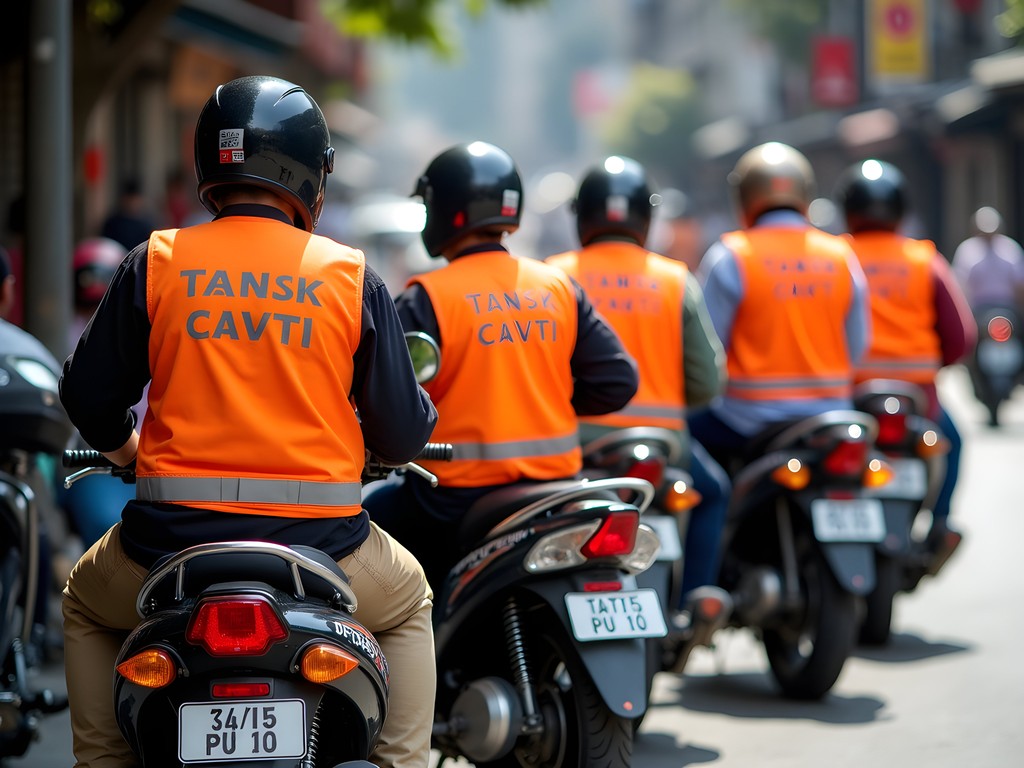
💡 Pro Tips
- Always ask for a helmet (some drivers carry spares)
- Avoid motorcycle taxis during rainy season when roads are slippery
- Keep your knees tucked in and follow your driver's instructions for leaning into turns
Final Thoughts
After five visits to Bangkok and countless journeys across this magnificent urban sprawl, I've come to see the city's transportation network as a perfect metaphor for Thailand itself – seemingly chaotic at first glance but governed by its own internal logic and surprisingly efficient once you understand its rhythms. What initially overwhelmed me has become one of my favorite aspects of visiting Bangkok.
Whether you're gliding above traffic on the modern Skytrain, negotiating with a tuk-tuk driver in a manner that would make any Scotsman proud, or bravely clinging to a motorcycle taxi as it weaves through impossible gaps, Bangkok's transport options offer more than just a way to get from A to B – they're experiences in themselves.
So on your next visit, step away from the comfort of taxis and rideshares for at least a few journeys. Embrace the local transport options with an open mind and a sense of adventure. Not only will your wallet thank you, but you'll gain insights into Bangkok life that many tourists miss entirely. After all, in this remarkable city, how you travel is often as memorable as where you go.
✨ Key Takeaways
- Use the Grab app for fair taxi prices when needed
- The BTS Skytrain and water taxis offer the best combination of efficiency and experience
- Always negotiate tuk-tuk prices before getting in
- Local transport options can save you 50-80% compared to tourist-oriented alternatives
📋 Practical Information
Best Time to Visit
November to February (cool season)
Budget Estimate
$30-50/day for transportation
Recommended Duration
3-7 days
Difficulty Level
Moderate

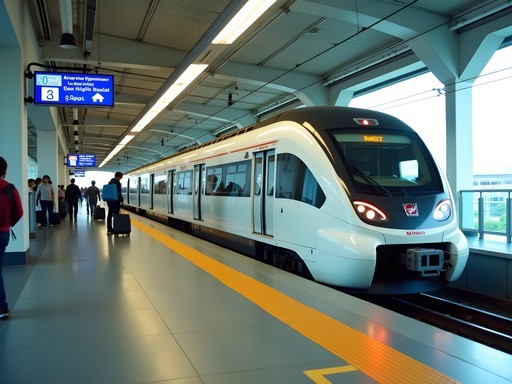
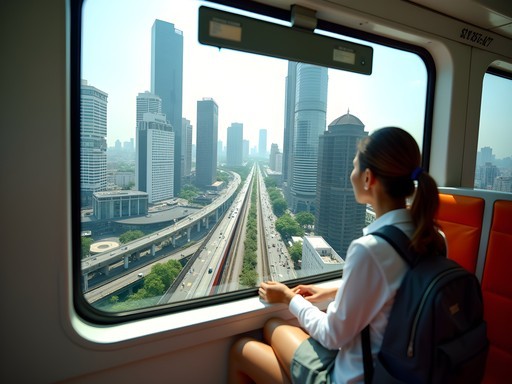
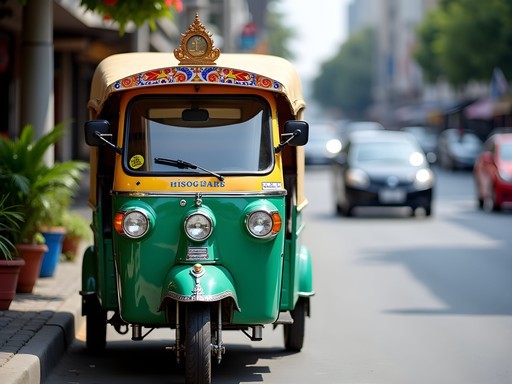
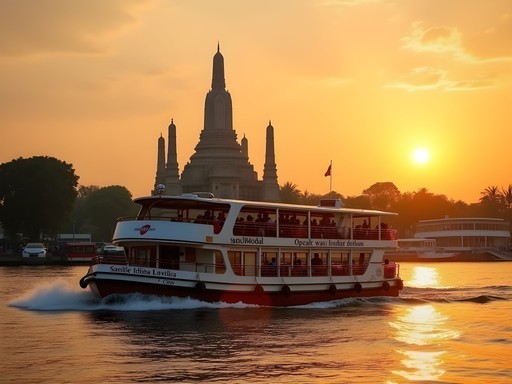
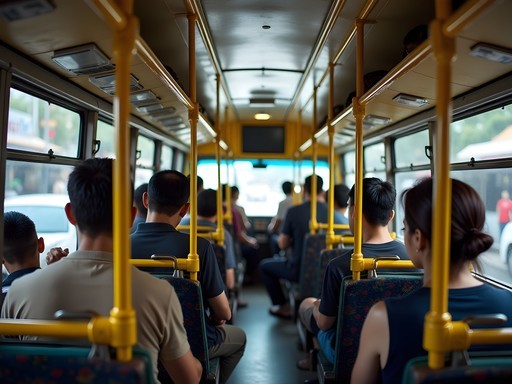
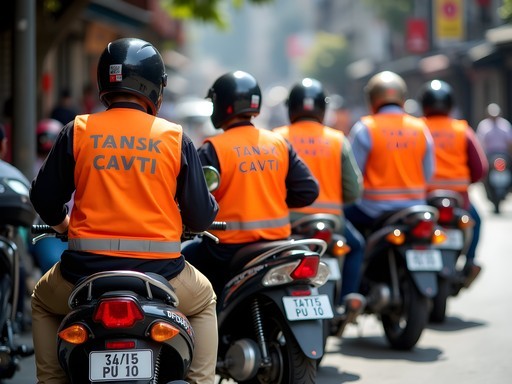


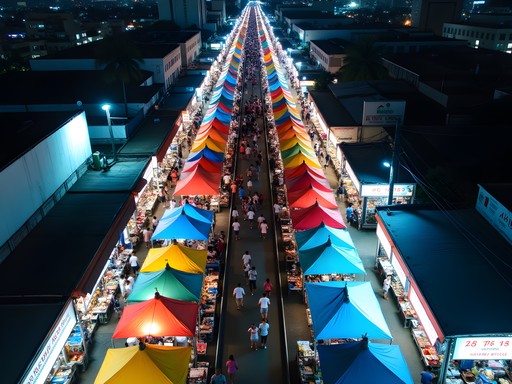
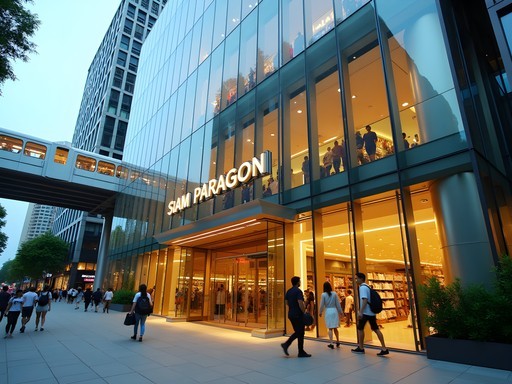


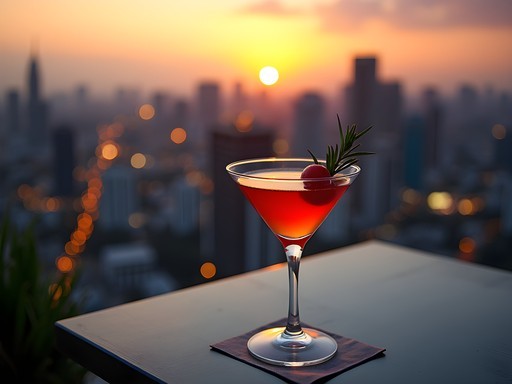


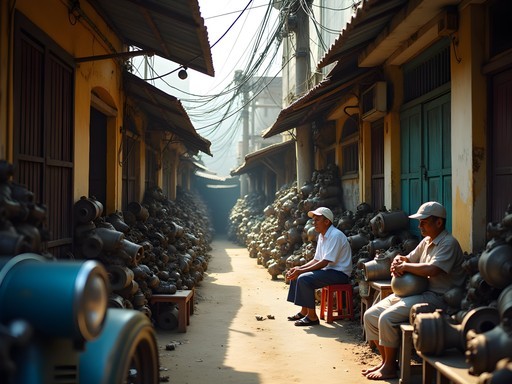
Comments
bluewalker
Is it worth getting a SIM card at the airport for Google Maps or do most places have WiFi?
redmate7273
Definitely get a SIM! It's super cheap (like $15 for tons of data) and having maps when you're lost in some random soi is priceless. The airport kiosks are actually not a bad deal.
Savannah Walker
Agree with getting a SIM. WiFi is common but not reliable enough when you're trying to navigate back to your hotel at 11pm!
Lillian Diaz
As someone who's spent months backpacking through Thailand, I can vouch for everything in this guide! My favorite Bangkok transport hack: the canal boats (khlong boats). They're super local, dirt cheap, and zip through the city avoiding all traffic. They're not in most tourist guides but are amazing for getting to places like Jim Thompson House. Just be ready to duck when bridges come! 😂 Also, for anyone staying near Khao San Road, there's a secret local bus that runs right to Siam Square for like 15 baht. Ask any hostel owner for the number.
Samuel Green
Lillian, you're absolutely right about the khlong boats! I was planning a follow-up post about those hidden transport gems. They're definitely not for the faint of heart but such an adventure!
redmate7273
We just got back from Bangkok and your BTS tips were spot on! That stored value card saved us so much hassle. One thing though - we found that Grab (the app) was actually cheaper than negotiating with tuk-tuk drivers in most tourist areas. Might be worth adding that as an option for people who hate haggling!
Savannah Walker
Samuel, you nailed it with this guide! On my third Bangkok trip last year, I finally mastered the art of the confident wave-down for taxis. One thing I'd add about the water taxis - they're not just practical but offer the BEST views of the city, especially around sunset. I spent an entire afternoon just riding up and down the Chao Phraya, hopping off to explore temples and markets. Cost me less than $5 total and gave me some of my favorite Bangkok memories. For first-timers: don't miss taking the water taxi to Wat Arun - the approach from the water is magical!
bluewalker
Is it easy to figure out which water taxi to take? Are there English signs?
Savannah Walker
There are some English signs at main piers, but I found having the offline map super helpful. The staff at piers are usually good about pointing you to the right boat too!
skypro
Water taxis are the best way to beat Bangkok traffic! 👍
happygal
OMG this is perfect timing! I'm heading to Bangkok next month and was totally freaking out about getting around. Those tuk-tuk negotiation tips are GOLD! 🙏
Samuel Green
Glad it helps! Just remember to always agree on a price before getting in a tuk-tuk. And don't be afraid to walk away if it seems too high!
happygal
Thanks for the tip! I've heard so many tuk-tuk scam stories that I was getting nervous!
summerlegend
Is the BTS Skytrain really that much better than taxis during rush hour? Worth the extra walking?
oceanninja
100% YES. Bangkok traffic is insane between 4-7pm. You'll sit in a taxi for an hour to go 2 miles while watching the Skytrain zoom by overhead. Trust me on this one!
summerlegend
Good to know, thanks! Will definitely plan around using the Skytrain then.
sunnyking
Love that shot of the water taxi at sunset! The colors are amazing. Did you use a special camera or just your phone?
Samuel Green
Thanks! Just my phone actually - Google Pixel with some minor edits. The lighting on the river at that time of day does all the work!
Fatima Sims
Samuel, your tuk-tuk negotiation tips brought back memories! On my first Bangkok trip, I got completely ripped off (paid 500 baht for what should've been a 150 baht ride). By my third visit, I was haggling like a pro! One thing I'd add - for anyone staying near Khao San Road, the canal boats are amazing for avoiding tourist prices. They're mostly used by locals and cost just 10-20 baht. I discovered them by accident when I got lost trying to reach the Grand Palace. Ended up having this incredible journey through the backwater canals, seeing a completely different side of Bangkok that most tourists miss!
summerlegend
Going to Bangkok next month for the first time. Are those canal boats easy to figure out if you don't speak Thai?
Fatima Sims
They can be tricky! I recommend downloading the Grab app and keeping a paper map as backup. Also worth grabbing pocket translator if language barriers worry you. The live translation feature saved me countless times!
oceanninja
This guide is spot on! Those water taxis are definitely the hidden gem of Bangkok transport.
Fatima Sims
Right? I used to avoid them because they looked intimidating, but they're actually super convenient once you figure them out!
oceanninja
Totally! Way better than sitting in traffic. Plus you get those amazing riverside views of the temples.
Venture X
Premium card with 2X miles, $300 travel credit, Priority Pass